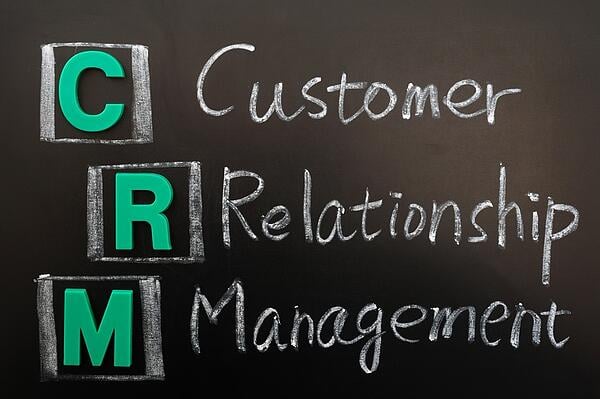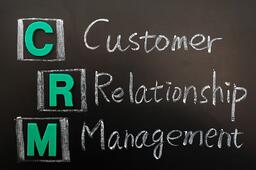CEO Blog - Advice for CEOs on growth and scaling
5 Steps to Making the Right CRM Decision for Your Business

Today's Guest Blog is by Barret Blank, President and CEO of BB2e
Time to re-evaluate. CRM purchase decisions which had been placed on hold for the past several quarters based on high cost, poor adoption and limited return are a thing of the past. Choosing the right CRM for your business' needs can lead to significant gains in marketing, sales and service effectiveness. It may be time to re-evaluate how best to access the benefits of this technology to drive your company's growth to the next level.

Overall CRM Value
The value of CRM is to provide a cradle-to-grave view of your customers. By understanding the elements which make a high-value customer, we can develop processes within marketing, sales and service operations to optimize their acquisition and retention. Understanding these elements is a complex decision process which depends on inputs from multiple sources and data points. Unfortunately, these sources and data are rarely integrated and as new systems like CRM are brought on board the challenge gets more difficult.
In light of these opportunities and challenges I've tried to identify some of the most critical decisions points when evaluating a successful CRM:
1. Platform vs. Point Solutions
One of the first and most fundamental decision points regarding in the CRM evaluation process is to determine the value of integration with legacy systems and data currently in the business. For larger entities with a history of transactional information, the opportunity or challenge is how to most effectively access this information with a new CRM.
A decision to leverage a ’Platform’ significantly reduces the integration risk since each module is developed to work with the platform as a whole. Enterprise Resource Planning (ERP) vendors like SAP and Oracle, and Productivity vendors like Microsoft (Office) and IBM (Lotus) provide packaged integration with their CRM systems. While these systems reduce the risk and cost of integration, the upfront price of these features can be expensive.
A decision to leverage a Point solution like Salesforce.com or SugarCRM will require a more custom development approach to integrate legacy systems and data. While packaged APIs and Web services have recently made this approach more attainable, maintenance and support of these components can add to the challenge. These systems may represent an increase in the risk and cost of integration but upfront price excluding these features can be less expensive.
2. Features
The system should provide a ‘cradle-to-grave’ approach to appropriately handling your methods for Marketing (Awareness), Sales (Acquisition) and Service (Delivery) for your solutions. Some systems are module in nature and charge for these components individually. The out-of-the-box features should be easily customizable to update data fields, processes and reports to meet the needs of your business.
Marketing Automation modules should include the ability to create and track campaigns through multiple channels. Supported channels include Mail merge, Email, Telemarketing/Call queues.
Website Analytics and Social Monitoring tools are some of the newer available features. With the ability to integrate data sources across the internet, CRMs can now consolidate many new channels of communication which affect buying decisions. Additionally, the ability to capture these discussions via a mobile Phone, Pad or Website allow us to more push and pull information as our customers require.
Sales Force Automation modules include sales process development to track and optimize a repeatable profitable model. Communications templates and proposal mgt. can also enable more effective sales operations. Territory Mgt. — Reporting/Analytics/Dashboards functionality can provide better pipeline and forecasted models.
Service Automation modules focus on tracking communication though Case and Activity mgt. Ordering, Provisioning, Usage and Billing functions automate service transactions for greater profitability. Customer self-service and partner portals are also effective for enhancing agent productivity. Service Management Reporting/Analytics/Dashboard functionality present ongoing metrics to enhance and retain customer relationships.
3. Deployment
CRM software can be deployed effectively in two basic forms — On-Premises and Hosted. Each deployment approach can be beneficial and cost effective depending on the business needs. On-Premises refers to the software residing on a local server and Hosted refers to the software being in a remote managed location On premises deployment benefits are Control, Support, Security, and Bandwidth. Some industries and regulatory requirements may dictate information security measures which may not be appropriate for a hosted deployment. Additionally, the ability to integrate disparate data sources in an on-premises environment allows for greater
A Hosted environment reduces the pain of infrastructure, resources, support and upfront investment while and on-premises enhances control, customization, security and mitigates long term costs. Speed to market, rapid prototyping of solutions and reduced upfront costs also have helped the hosted market grow significantly in recent years.
4. Cost
CRM costs can come in multiple forms as well. Freemuim, Basic and Enterprise models usually describe groups of software features and numbers of access licenses available. The ‘Freemium’ model is used for scaled market entry and can be paired with an indirect cost i.e. advertising model. The ‘Basic’ will provide a sub-set of the ‘Enterprise’ features and be limited in user access.
Our deployment decisions can also impact costs. On-premises deployments are sold with server and per user licenses. The initial upfront investment is greater than the hosted model but in the longer term these costs are lower and can be depreciated.
The term ‘Software as a Service’ (SaaS) is often times confused with a hosted deployment, but it actually impacts costs to a greater degree. SaaS refers to a common architecture in which all clients of the software share the same deployment and release level. This allows the application provider to more effectively manage and maintain the software while making it more difficult for the client to customize the software. The easier the software is to manage the greater cost flexibility the provider has with features sets of the software.
5. Vendor/Market Review
While cloud-based CRM services (Hosted/SaaS) are growing at 25% annually, On-premises ERP vendor-deployed CRMs still dominate the market. As new features, integration services and reduced costs drive the market, new vendor entrants will challenge the dominant players.
- ERP Vendors - Oracle/SAP – Maintain a 35% market share based on their large installed on-premises license base. This market grows and contracts primarily based on the seats required by enterprise clients.
- Salesforce.com – Maintains a 17% market share and leads hosted solutions based on its first to market SaaS offering. SF.com value include an excellent community of developer support which brings new features to market rapidly which helps drive a 20% growth for this solution.
- Microsoft – Is rapidly growing a 11% market share. Their Certified Partner helps sell, service and customize the application. Integration with the Microsoft Server, Office Suite and SharePoint are helping to drive a 25% growth in this solution.
- Industry focused CRMs – Maintain a 5% market share and target niche and industry specific features. Examples of solutions which focus on specific vertical are RightNow - Retail, Epicor - Mfg, Infor - Mfg.
I hope that you can use this review when evaluating the best CRM system for your business.
 Barret Blank is the President and CEO of BB2e: Be Inventive.
Barret Blank is the President and CEO of BB2e: Be Inventive.
For more information on integrating marketing, sales and customer service to drive the greatest lifetime customer value, please contact me at info@bb2e.com or visit us at www.bb2e.com
Topics: CEO Choices, Customer Satisfaction, Measuring Marketing, Marketing Metrics, Marketing Automation
Wed, Oct 24, 2012- Press Releases
- Careers
- Case Studies
- Marketing Consultant Company
- Marketing Strategy Consultants
- Marketing Plan Consultants
- B2B Marketing Consultants
- Virtual CMO
- Marketing Consultant Outsourcing
- Fractional CMO
- What is a Fractional CMO
- Healthcare Marketing Consultant
- Marketing Consultant Houston TX Texas
- Marketing Consultant Texas TX
- Marketing Consultant Bay Area
- CEO Blog
- Ebooks Plus
- Executive Marketing Consultants
- Product Marketing Consultants
- B2C Marketing Consultants
- Virtual Marketing Consultants
- Senior Marketing Consultants
- Temporary CMO
- Hire a CMO
- Fractional CMO Salary
- Fractional CMO Responsibilities
- Marketing Consultant Austin TX Texas
- Marketing Consultant Dallas TX Texas
- Marketing Consultant San Antonio
- Helping Private Equity
- Private Equity Blog
- Leadership Team
- Privacy Policy
- Business Marketing Consultants
- Strategic Marketing Consultants
- Marketing Technology Consultants
- Sales and Marketing Consultants
- CMO Job Description
- CMO Salary
- Fractional CMO Agency
- Fractional CMO Services
- CPG Marketing Consultant
- Marketing Consultant San Diego
- Partners
Houston, TX 77056
© 2023 Chief Outsiders


